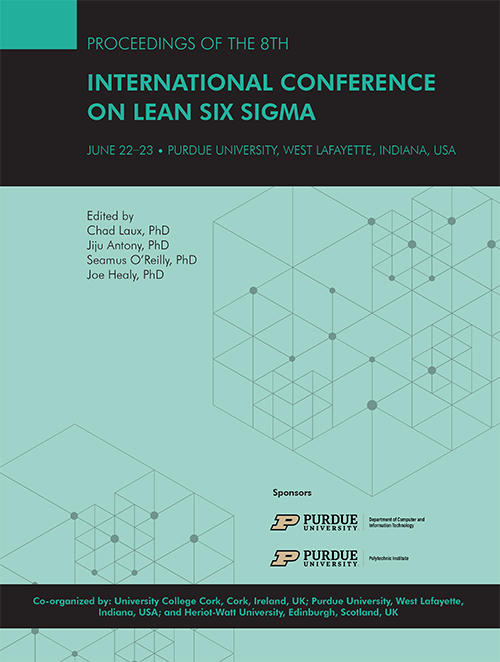DOI
10.5703/1288284317338
Abstract
Purpose:
The purpose of this project was to optimize the patient transportation process at an acute care hospital to achieve reduced transportation times.
Methodology:
A detailed Lean Six Sigma study on the patient transport and equipment handling processes helped to determine possible ways to reduce the equipment handling time which eventually reduces the patient transportation time. The Systematic Layout Planning (SLP) approach usually applied in manufacturing environments was used to identify which patient transport equipment was needed to be stored in which locations throughout the hospital footprint. The assignment of equipment to locations was determined based on frequency of use, distance, and equipment type.
Findings:
Key challenges were identified as lack of traceability of equipment, insufficient storage locations and storage locations with inappropriate equipment. Through SLP and statistical analysis of patient transport data, pickup locations were identified to minimize distance for high frequency trips for each mode of transport.
Limitations:
We provided the recommendations to the hospital to implement, but due to COVID pandemic resource issues they had not yet implemented the recommendations, although they are still planning to do so.
Practical Implications and Originality/Value of Paper:
The usage of the SLP approach combined with the Lean Six Sigma DMAIC method and tools was applied in the hospital environment to potentially reduce patient transport times, in what appears to be the first such research study applied to a hospital’s patient transportation system.
Keywords: Patient transportation, Equipment, Systematic Layout Planning, Healthcare, Lean Six Sigma
Paper Type: Case Study
Paper
Furterer bio.docx (101 kB)
Furterer bio
Pratheeka bio.docx (12 kB)
Kancharla bio
Applying Lean Six Sigma and Systematic Layout Planning to Improve Patient Transportation Equipment Storage in an Acute Care Hospital
Purpose:
The purpose of this project was to optimize the patient transportation process at an acute care hospital to achieve reduced transportation times.
Methodology:
A detailed Lean Six Sigma study on the patient transport and equipment handling processes helped to determine possible ways to reduce the equipment handling time which eventually reduces the patient transportation time. The Systematic Layout Planning (SLP) approach usually applied in manufacturing environments was used to identify which patient transport equipment was needed to be stored in which locations throughout the hospital footprint. The assignment of equipment to locations was determined based on frequency of use, distance, and equipment type.
Findings:
Key challenges were identified as lack of traceability of equipment, insufficient storage locations and storage locations with inappropriate equipment. Through SLP and statistical analysis of patient transport data, pickup locations were identified to minimize distance for high frequency trips for each mode of transport.
Limitations:
We provided the recommendations to the hospital to implement, but due to COVID pandemic resource issues they had not yet implemented the recommendations, although they are still planning to do so.
Practical Implications and Originality/Value of Paper:
The usage of the SLP approach combined with the Lean Six Sigma DMAIC method and tools was applied in the hospital environment to potentially reduce patient transport times, in what appears to be the first such research study applied to a hospital’s patient transportation system.
Keywords: Patient transportation, Equipment, Systematic Layout Planning, Healthcare, Lean Six Sigma
Paper Type: Case Study






